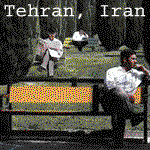U.S. mistakenly sent nuclear missile fuses to Taiwan
 An aerial view of the Pentagon building in Washington, June 15, 2005.
An aerial view of the Pentagon building in Washington, June 15, 2005.25 March 2008
By Kristin Roberts
WASHINGTON -The U.S. military mistakenly shipped four fuses for nuclear missiles to Taiwan in 2006 and never caught the error, the Pentagon said on Tuesday, acknowledging an incident likely to rile China.
The military was supposed to ship helicopter batteries to Taiwan, but instead sent fuses used as part of the trigger mechanism on Minuteman missiles. Taiwan returned the parts to U.S. custody last week.
No nuclear material was shipped to Taiwan, Pentagon officials said.
The problem went unnoticed until Taiwan realized it did not have the helicopter batteries it ordered and reported the issue to the United States, U.S. officials said.
The United States has notified China, which claims the self-ruled island as its own, and is modernizing its military to close the technology gap with Taiwan's mainly U.S. weapons. The two sides have been run separately since 1949, and Beijing has never renounced the use of force to bring the island under its control.
"The secretary of defense is taking this very seriously. We are all taking this very seriously," Air Force Secretary Michael Wynne said.
"Though this was not and could not be construed as nuclear material ... I would tell you that we are very concerned about it," he told reporters at the Pentagon.
The fuse shipment marks the Pentagon's second embarrassing misplacement of nuclear or nuclear-related equipment announced in the past year. An Air Force bomber last year mistakenly flew over the United States with nuclear warheads.
The Defense Department has ordered the Navy and Air Force to take inventory of all nuclear and nuclear-associated equipment and material and U.S. Defense Secretary Robert Gates has ordered an investigation into the fuse incident, said Ryan Henry, principle deputy undersecretary of defense for policy.
The United States may have violated international law or international arms agreements with the shipment.
"That's under analysis now," Henry said. "If there was something that was amiss, it clearly was not intentional."
UNCERTAIN TIMELINE
What led to the misfired fuse shipment is still unclear, Henry and Wynne said. The Pentagon also does not yet know who was responsible.
The fuses, which send an electronic signal to the weapon that starts the nuclear weapon's trigger process, are among a class of sensitive equipment that must be accounted for on a quarterly basis.
Based on the information now known, the four fuses, which do not look like helicopter batteries, were wrongly placed in an unclassified storage area. They were then shipped in late 2006 to Taiwan, which placed them in storage.
When Taiwan realized it had received the incorrect shipment, it notified the U.S. military. Wynne would not say when Taiwan first reported the problem.
U.S. military officials did not understand the nature of the problem until last week.
"We on our side thought we were talking about different sorts of batteries. There was an effort to resolve and reimburse them. It wasn't until this past week that we became aware that they had something akin to a nose-cone assembly," Henry said.
"So there were early communications but we thought we were hearing one thing. In reality they were saying something different."
Gates and President George W. Bush were told on Friday, the day the fuses were returned to U.S. custody, officials said.
Labels: Bush, China, International Arms Agreements, International Law, Taiwan, United States














0 Comments:
Post a Comment
<< Home